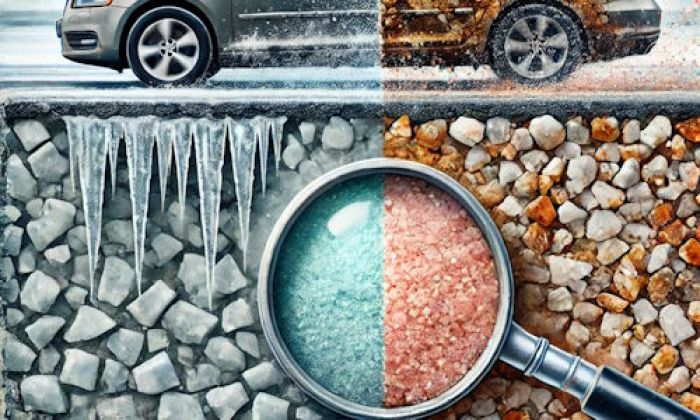Toyota 3L diesel engine (TD) is a legendary unit that is still on the roads. It was sold all over the world and even in America, the country that loves exclusively gasoline engines. The simple 3L TD engine had basically no problems. It was installed in a Toyota Hiace Van, Toyota Hilux pickup, and also Toyota 4Runner, and some other vehicles.
Key features and my opinion about the engine
- Production years:1988-2005
- Average lifespan of 3L:260,000-290,000 miles
- Fuel supply type:prechamber
- Power range:78-91 hp
- Fuel efficiency:bad
- Engine block material:cast-iron
- Engine reliability score:high
- The most common problems:noise and vibrations, oil and coolant leaks, belt is OK but the engine is dead if it's broken.

Why is overheating so dangerous for your Toyota 3L engine?
The TD engine usually doesn't generate a lot of heat. But if something goes wrong in the cooling system or in some other important parts of this engine, it can easily overheat and cause some problems. Usually, bad overheating may even mean the death of this engine due to numerous damages.
If you see the temperature gauge going up the usual position, you should stop your vehicle. At least, let it cool down a bit before you drive it again. You can still drive the car if the gauge falls under the usual position quickly and never gets over it again.
Here are some of the consequences of overheating for the 2.8-liter Toyota diesel engine:
- Engine head problems. Overheating kills the head because the metal gets a little bigger when heated and the parts can't work properly anymore. Something may just get stuck.
- Timing belt issues. The timing belt may break or change its position which will result in engine stalling or bad timing. If the belt brakes, the engine will not just stall, it will destroy some of the valves because they will heat over the pistons.
- Engine block damage. Pistons will also grow in size a little and they may start scratching the block of cylinders. Repairing this problem is not cheap and sometimes is just impossible.
- Head gasket failure. The head gasket may leak after overheating. The main reason is that the head changes its shape a little and the gasket starts leaking or it's pressed too much between the head and the block.
- Bad oiling. Because of overheating, the space between some parts (like pistons and the block of cylinders, for example) gets smaller. It means that the oil can't get through these spaces and the metal parts work without oiling.
So, in the end, long-time overheating leads to engine death. Also, the higher the temperature, the worse the consequences. Diesel engines hate overheating, they may be broken quite soon if you don't notice the temperature gauge going mad.
We believe the overheating is the biggest problem of the 3L diesel engine in Toyota. And this problem makes its lifespan much shorter than it could be. The main reason is that overheating is a common problem for this engine and it affects the work of all mechanisms and units. So, you have to watch it carefully and do something once it happens.
What are the reasons for Toyota 3L engine overheating?
We've investigated forums and we've also asked specialists from the UK to give us more information on these diesel engines. After that, we analyzed the data and formed a set of reasons that can cause overheating.
Unfortunately, some of the reasons are so tricky that you can't predict or even see them after they start affecting your vehicle. But we still list them below to let you know and let you be prepared for the problems.
1. Coolant leaks
The Toyota 2.8-liter diesel engine is not new at all. And it can leak some coolant. You have to check the pipes and tubes of the cooling system, the radiator, and also the coolant pump. These are the main units that can leak and cause problems with the coolant level.
Also, we recommend checking the coolant level regularly. It's easy - just open the hood and look at the plastic reservoir with coolant. If the level is close to or below the "MIN" line, you should add some coolant immediately and check if there are leaks.
2. Clogged radiators
This is a common problem for all aging cars, so checking the radiator and flushing it with some professional materials will always be a good idea. The clogged radiator will always cause overheating because the coolant doesn't have a chance to cool down at the important stage of the circling.
Also, the clogged radiator will not be cleaned without your help. Over time, the problem will be getting even worse.
3. Problems with the radiator fan
We don't know why, but this is the only Toyota vehicle that has common problems with the radiator fan. It may stop working or it may glitch and turn on at the wrong time.
First of all, check the fan sensors. The ones that turn it on and off. Also, check the fan wiring. Maybe some wires just fell off or were broken because of the age of the vehicle. The fan itself is not likely to be broken, but you should check it, too.
4. Head gasket problems
If you notice that the coolant level falls very fast, and there are no leaks detected, you probably have a problem with the head gasket in your vehicle. Unfortunately, it's a common problem for a Toyota 2.8-liter diesel engine. It may fail at any mileage.
The best decision, in this case, is to stop driving your vehicle and replace the gasket as soon as it's possible. If you keep driving without the coolant, you will get more problems and will need to invest a lot to keep the engine running.
5. Gauge problems
We also know that the temperature gauge in your Toyota may be misleading you. It's not about the gauge but about the temperature sensor in your engine that may start sending wrong information to the ECU. It will make the gauge jump from one position to another.
If the gauge is showing some mad overheating but then you open the hood and see no other facts that prove bad overheating, the sensor may be in charge. Checking it is possible during computer diagnostics but replacing the sensor is not a difficult task at all.
6. Timing belt slipping
Well, there is another common problem that is worth mentioning here. The 3L TD Toyota engine has a belt-driven camshaft system and the belts can be worn quite fast if there are some minor problems or if the belts aren't very good.
Replacing the belts every 40,000 miles (or even more often) is essential. Even if your belt is relatively new, it can slip and fail to get the coolant pump working. This will lead to coolant standing calmly in the system and not cooling the engine.
One of the best solutions is just to replace the timing belt. Especially, you should do it if the belt looks bad, looks shiny from the outside, or has some cracks.
7. A broken thermostat
We put it in the last place on our list because this problem is not that common. Though, we have heard some Hilux owners saying about this problem in their diesel engines.
The thermostat can be just stuck in one position. If it's stuck open, the engine will be impossible to heat to the normal temperature. It will always be cold. But if it's stuck closed, the overheating problem will occur.
The coolant will be always sent to the small circle and it won't even get to the main radiator. So, the coolant will be hot very fast and it will keep heating but not cooling down in the radiator.
This problem is actually very bad and you have to do something if you notice this. Usually, the coolant will start boiling 15 or 20 minutes after you start your vehicle. It may be relatively OK on a very cold winter day. But on a summer day, you will have this problem.
Final words
Be careful with overheating your diesel engine. We've come up with seven main reasons why it may happen. But sometimes, other problems may occur, too. We believe you can find the answer to your question of why is the Toyota 2.8-liter diesel engine overheating.
Also, we've provided you with some options on how to deal with the problem. We don't recommend you wait and hope that everything will be fine. Do something to save your engine and prevent problems. Otherwise, you will need to pay a lot of money for the total repair of your diesel engine.
About the authors
The CarAraC research team is composed of seasoned auto mechanics and automotive industry professionals, including individuals with advanced degrees and certifications in their field. Our team members boast prestigious credentials, reflecting their extensive knowledge and skills. These qualifications include: IMI: Institute of the Motor Industry, ASE-Certified Master Automobile Technicians; Coventry University, Graduate of MA in Automotive Journalism; Politecnico di Torino, Italy, MS Automotive Engineering; Ss. Cyril and Methodius University in Skopje, Mechanical University in Skopje; TOC Automotive College; DHA Suffa University, Department of Mechanical Engineering






Add comment